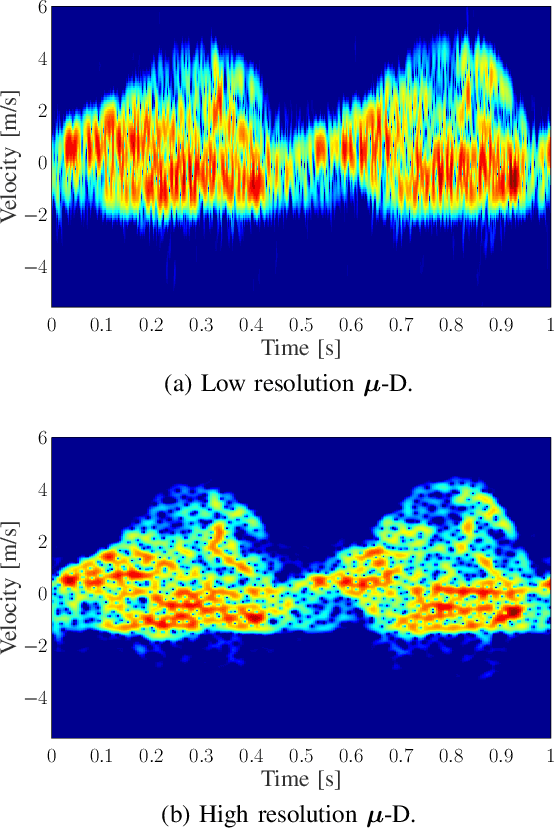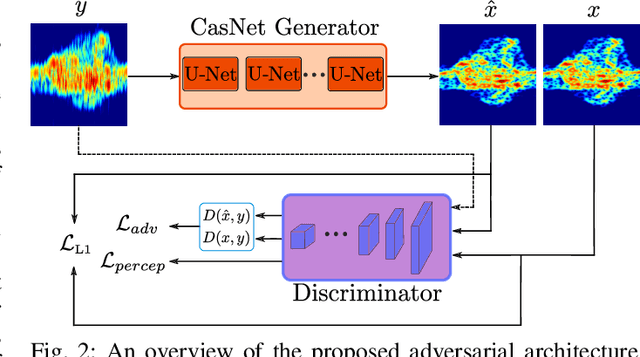An Adversarial Super-Resolution Remedy for Radar Design Trade-offs
Paper and Code
Mar 04, 2019



Radar is of vital importance in many fields, such as autonomous driving, safety and surveillance applications. However, it suffers from stringent constraints on its design parametrization leading to multiple trade-offs. For example, the bandwidth in FMCW radars is inversely proportional with both the maximum unambiguous range and range resolution. In this work, we introduce a new method for circumventing radar design trade-offs. We propose the use of recent advances in computer vision, more specifically generative adversarial networks (GANs), to enhance low-resolution radar acquisitions into higher resolution counterparts while maintaining the advantages of the low-resolution parametrization. The capability of the proposed method was evaluated on the velocity resolution and range-azimuth trade-offs in micro-Doppler signatures and FMCW uniform linear array (ULA) radars, respectively.
 Add to Chrome
Add to Chrome Add to Firefox
Add to Firefox Add to Edge
Add to Edge